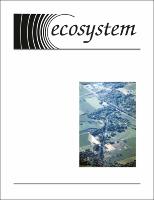Please use this identifier to cite or link to this item:
https://hdl.handle.net/11681/4278| Title: | Corridors and vegetated buffer zones-guidelines for Corps of Engineers projects |
| Authors: | Fischer, Richard A., Jr., 1964- Martin, Chester O. |
| Keywords: | Watersheds Water quality Environmental management Riparian ecology |
| Publisher: | U.S. Army Engineer Waterways Experiment Station |
| Series/Report no.: | Information Exchange Bulletin (Ecosystem Management and Restoration Research Program (U.S.)) ; no.EMRRP-98-1 |
| Abstract: | To effectively manage natural resources within watersheds, it is often necessary to establish vegetated buffer zones to protect aquatic systems from land-use activities that occur in uplands. The majority of inland Corps of Engineers civil works projects are constructed along streams and rivers that have adjacent riparian corridors. There is increasing interest in the value of riparian areas as corridors and buffer strips on Corps lands, especially as potential wildlife habitat. These landscape features typically comprise a very small proportion of the landscape, but they provide essential habitat for a variety of plants and animals. Many riparian buffer zones and corridors on Corps lands are badly in need of restoration and management. However, Corps project managers currently have only limited information and few guidelines on design criteria. This article describes work to develop technical guidelines for restoring and managing riparian buffer zones and corridors. The potential benefits—with regard to water quality and many important ecological functions—are significant. |
| Description: | Information Exchange Bulletin |
| Gov't Doc #: | EMRRP-98-1 |
| Rights: | Approved for public release; distribution is unlimited |
| URI: | http://hdl.handle.net/11681/4278 |
| Appears in Collections: | Information Exchange Bulletin |
Files in This Item:
| File | Description | Size | Format | |
|---|---|---|---|---|
| EMRRP-98-1.pdf | 1.45 MB | Adobe PDF |  View/Open |